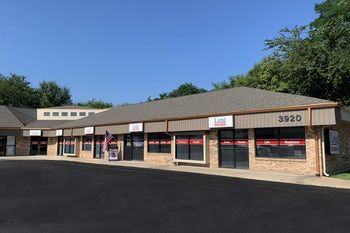By Cincinnati Life
Most business owners know they need one; however, I still meet with business owners weekly who do not have a formal business continuation plan in place. Owners can be most prepared for the futures of their firms by consulting with attorneys to draft buy-sell agreements.
The next step is to consider ways to fund the agreement and avoid unintentional tax consequences. When set up correctly, life insurance is an economical way of funding buy-sell agreements. At pennies on the dollar of coverage, it’s usually affordable and practical, but there are pitfalls on the way to a successful continuation plan.
Let’s explore six topics business owners need to understand to help them avoid the mistakes commonly made related to using life insurance to fund business continuity:
IRS REQUIREMENTS – ENSURE REGULATORY COMPLIANCE
Agreements can be set up as stock redemption agreements, meaning the business will buy back the shares if a triggering event occurs, or as cross-purchase agreements, meaning the partners buy each other’s shares if a triggering event occurs. Both are appropriate options; however, if IRS requirements aren’t strictly followed, the insurance proceeds may result in a taxable event upon the death of an owner. To avoid this, business owners must:
- Notify the employee in writing about the insurance policy prior to the policy issue date.
- Submit IRS form 8925 to the IRS each year.
OWNERSHIP – SET UP OWNERSHIP TRANSFER TO AVOID UNDERFUNDING AND UNNECESSARY TAXES
With stock redemption and cross-purchase agreements, it is important that the owner and beneficiary are set up correctly to ensure that the agreement is funded properly, avoiding an unintentional taxable event upon death or disability:
- In a stock redemption agreement, the insurance policy needs to be owned by the business, not other business owners or the insured’s spouse whose listing as beneficiary results in a taxable event.
- In a cross-purchase agreement, the insurance policies need to be owned by the other partners, not the insured’s spouse to avoid unnecessary taxes. For example, owner A owns and is beneficiary of a policy on owner B and vice versa.
BUSINESS VALUATION – KNOW THE BUSINESS’ WORTH
According to LIMRA, a worldwide research, consulting and professional development organization, business owners often perceive their business’s value to be greater than its actual market value. Owners can get a handle on their business’s true value by obtaining appraisals, a sometimes expensive but effective tool, or a valuation formula that includes a fixed price, book value or a combination of these.
PRODUCT – MATCH RISKS TO OBJECTIVES
Buy-sell agreements may state that the business or other owners must purchase life insurance to fund the buyout, but what product makes the most sense?
As you consider which product matches your risks, objectives and timeframe, keep in mind that while term life insurance is the simple answer, it may not always be the best solution. What if the business owner wants to use cash values from a permanent life policy to help fund their own buyout upon retirement and a term product may expire before they reach retirement age?
DISABILITY – PROTECT AGAINST THE UNFORESEEN
Statistics from LIMRA show that a business with three, 45-year-old owners has a 57 percent chance of one or more owners becoming disabled before age 65. Making sure buy-sell agreements address disability, and that insurance is in place to protect that risk, ensures business continuity as planned.
PROCRASTINATION – ACT NOW
The biggest mistake many owners make is waiting to fund their buy‑sell agreements; putting it off doesn’t diminish the need. If an agreement is in place, parties are legally obligated to fulfill it.
What’s next?
If you are a business owner, contact Lang Insurance at (636) 229-7000 or at info@langinsurance.com to discuss your business continuation planning needs. After reviewing life and disability coverages and making the appropriate arrangements, plan on sitting down with your agent every one to three years to make sure the correct products and benefits are still in place.










